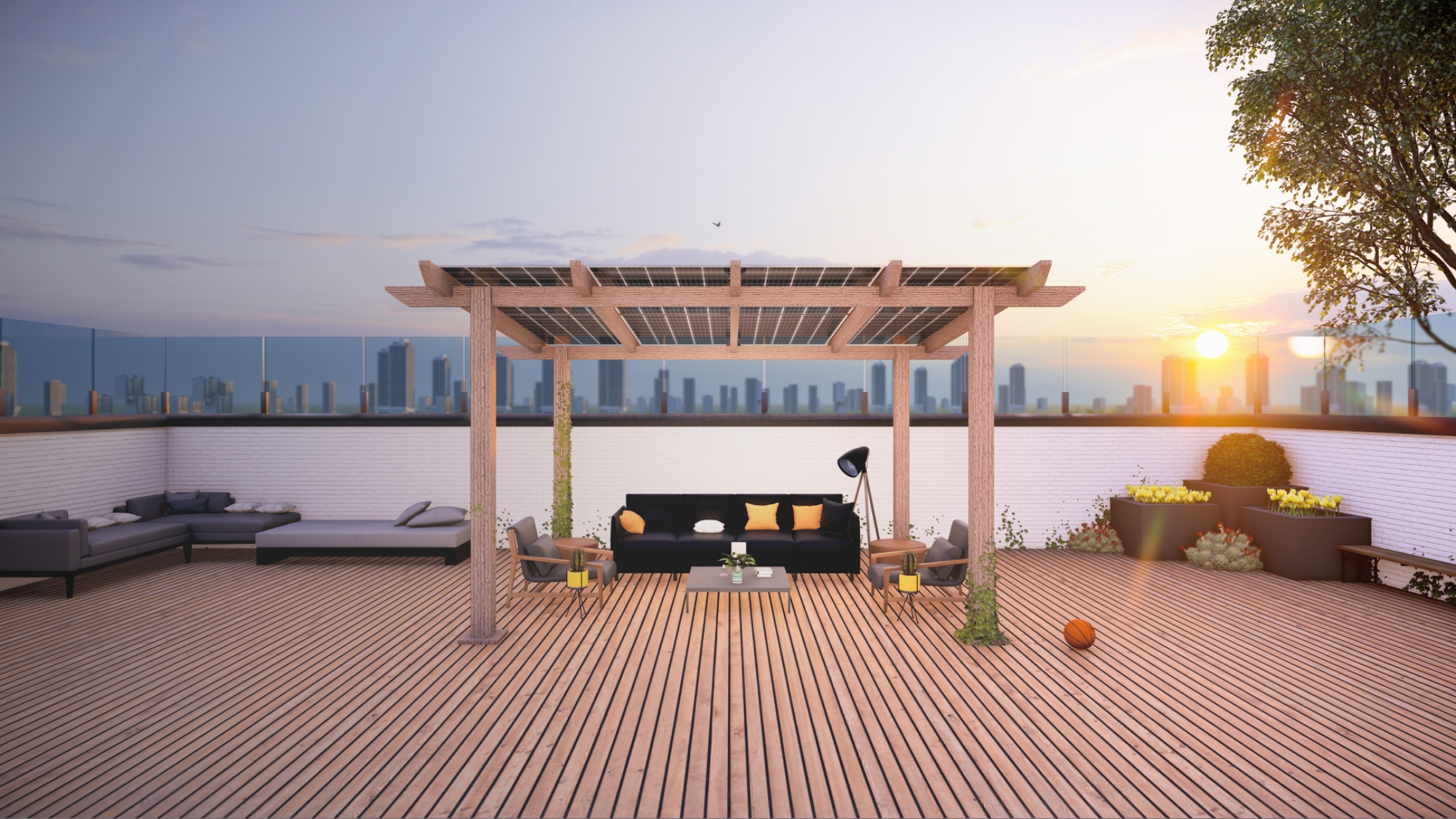In the first instalment of our ‘Personal Guide to Installing Solar at Home’ series, we covered the initial steps needed to Go Solar. We delved on how to weigh your choices and check how much energy your home consumes, to help with the solar system installation process. Here is the second part of the five-part series on your personal guide to installing solar at home.
Nearly any roof is appropriate for solar use with emerging technologies, barring any restrictions the infrastructure imposes. It’s a matter of which solar technology better suits the home. In the second article, we will cover the type of solar panel installation you could choose from, and metrics for determining your budget.
Step 3: Grid-Connected vs Off-Grid vs Hybrid
Grid-Connected Systems
On-grid or grid-connected solar installations are the most popular and commonly deployed in residences. These systems do not require batteries and are connected to the public electricity grid, using either solar inverters or micro-inverters. Any surplus solar energy you produce is added to the electricity grid. The electricity exported is compensated by a feed-in tariff (FiT) or credits. If the photovoltaic panels do not generate enough electricity to meet your consumption needs, the difference will be sourced automatically from the grid.
Advantages
1) Virtual battery
The electric power grid is indeed a battery in many respects, with little need for upgrades or repairs and comparatively better efficiency values. In other words, with traditional battery systems, more electricity gets lost.
2) Save money with the help of net-metering
Most of the times, photovoltaic systems produce more electricity than you can use. House owners could transfer this extra electricity into the power grid with the help of net metering, rather than storing it in batteries. Net metering is a process for billing which credits owners of solar energy systems for the electricity they contribute to the grid.
For instance, a residential homeowner has a photovoltaic system on his rooftop, during the daytime, the system produces more power than his home requires.In that case, the electricity meter will operate backwards if the home is net-metered. It offers a credit against what energy is used at nighttime or other times where the electricity consumption of the home exceeds the output of the system. Then, the customer is charged only for the use of ‘net’ electricity. From a financial perspective, without net metering, rooftop solar costs will be less feasible. Some utilities are dedicated to purchasing power from customers at the same price they sell it.
Off-Grid Systems
An off-grid system is not linked to the electricity grid. Hence, battery storage is necessary.
Advantages
1) Access to electricity
In some locations, where there is no access to the grid, off-grid solar panels can be a better option, rather than extending power lines. Through off-grid solar systems, residents who live in places disconnected from the grid can save money. These systems make it possible that consumers do not have to pay extra to connect to the grid. It offers individuals the right to live anywhere and being able to generate and manage electricity.
2) Self-sufficient electricity production
Without any notice, power outages can spring up. Losing control means going without electricity, which can be a short-term problem and an exceedingly frustrating long-term interruption. A power failure can always be over as soon as it occurs, but the lack of energy will often last longer. Many times, depending on the origin of the outages and the amount of time it takes to resume service, it can continue for a day or even weeks.
Power failures in the utility grid do not harm off-grid solar installations. As these devices store electricity and are still ready for future crises, off-grid solar energy systems are useful during blackout scenarios. In the wake of any possible incidents, a household with an off-grid solar photovoltaic system could continue to have electricity.
Hybrid Systems
Hybrid solar systems incorporate the best solar technologies from grid-tied and off-grid. These systems can be represented either as off-grid solar with utility backup capacity, or grid-tied solar with additional storage of batteries.
Advantages
1) Less costly compared to off-grid solar systems
Hybrid solar structures are less costly than off-grid systems since you do not need a backup generator. The battery bank’s power can be downsized.
2) Smart solar has a bright future
Hybrid solar systems have started opening for many exciting developments. New inverters allow residents to reap the benefits of differences in the utility electricity prices throughout the day with the help of the battery storage systems.
Step 4: Determine your Budget
Think about the following points while budgeting for your solar system:
- Like we stated in the first part of this guide series, you might have to estimate the load and determine the type of system that suits your requirements. After doing this, you would be able to estimate how much the installation of a solar system at your home would cost you.
- Calculate your earnings and your expenditures, your expectations and your preferences, and determine the amount of money that you should potentially set together for your residential investment which can give you returns upto 30% with a payback period of 4-5 years.
- Other than your personal goals, your professional solar contractor will help you assess what your project might look like. Reach out to HomeScape to help you with all your solar installation needs.
In conclusion, the second part of our personal guide series talked about the type of systems you could get (Grid-Connected vs Off-Grid vs Hybrid) and the points you should keep in mind while budgeting for your solar system. Since 2010, the cost of photovoltaic solar energy has reduced by 82 per cent. So, this would be the right time to consider purchasing a rooftop solar system. Watch out this space for the next part of our blog series on your Personal Guide to Installing Solar at Home.
Read about Part-1 of the Five-part series – https://homescape.solar/personal-guide-to-install-solar-at-home-part-1-system-type/



